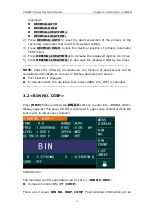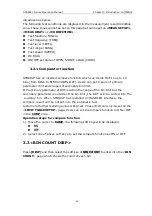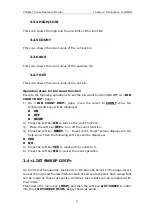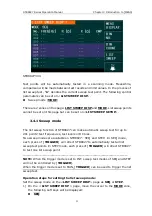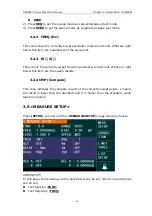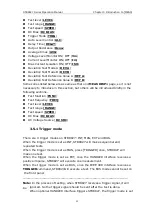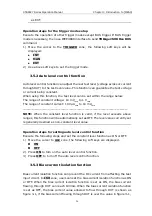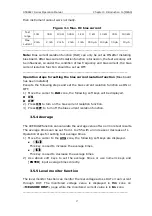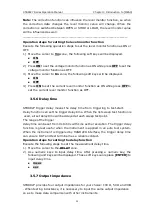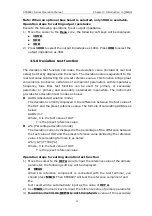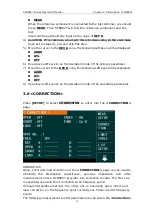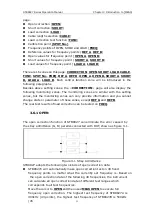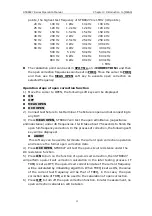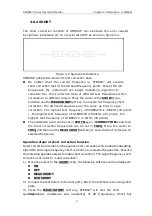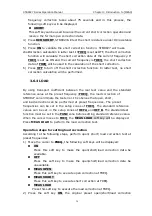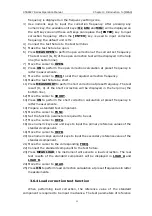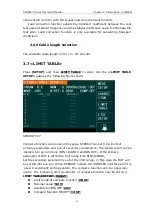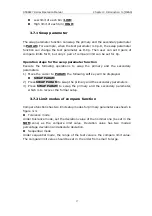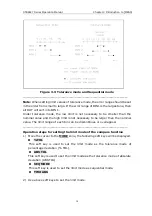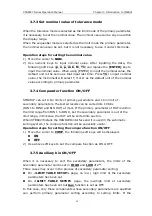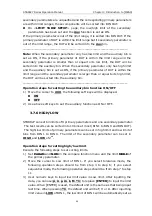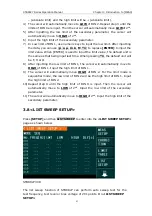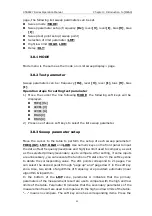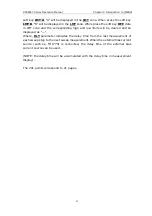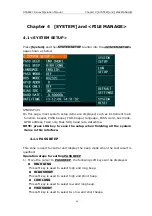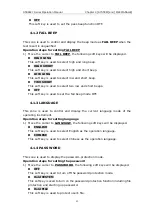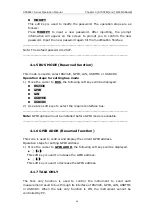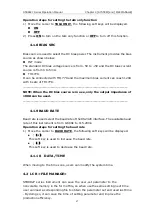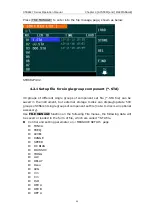
STB8827
Series Operation Manual Chapter 3 Introduction to [MEAS]
3.6.2
33
SHORT
The short correction function of
STB8827
can eliminate the error caused
by spurious inductance (R, X) in serial with DUT as shown in figure 3-2.
Figure 3-2 Spurious Inductance
STB8827
adopts two kinds of short correction data.
No matter what the current frequency is,
STB8827
will execute
short correction test on the 48 fixed frequency points. Except the 48
frequencies, the instrument will adopt imbedding algorithm to
calculate the short correction data of different test frequencies which
correspond to different ranges. Move the cursor to the
SHORT
zone,
and then use the
MEAS SHORT
soft key to execute full frequency short
correction. The 48 fixed frequencies are the same as that in open
correction. The highest test frequency of
STB8827
A is 300kHz (43 points
), the highest test frequency of
STB8827
B is 500kHz (45 points, the
highest test frequency of
STB8827
C is 1MHz (48 points).
The calibration point can be set in
SPOT No.
on
<CORRECTION>
and then
the short correction frequencies can be set in
FREQ
. Move the cursor to
FREQ
and then use the
MEAS SHORT
soft key to execute short correction on
selected frequency.
Operation steps of short correction function
Short correction includes full frequency short correction which adopts imbedding
algorithm and single frequency short correction on selected frequencies. Execute
the following operation steps to make short correction. The single frequency short
correction can refer to “Load correction”.
1) Move the cursor to the
SHORT
zone, the following soft keys will be displayed:
ON
OFF
MEAS SHORT
DCR SHORT
2) Connect the test fixture to the test ports. Short the test fixture by using short
plate.
3) Press the
MEAS SHORT
soft key,
STB8827
will test the short
spurious
impedances (resistance and reactance) of 48 frequencies. Short full

